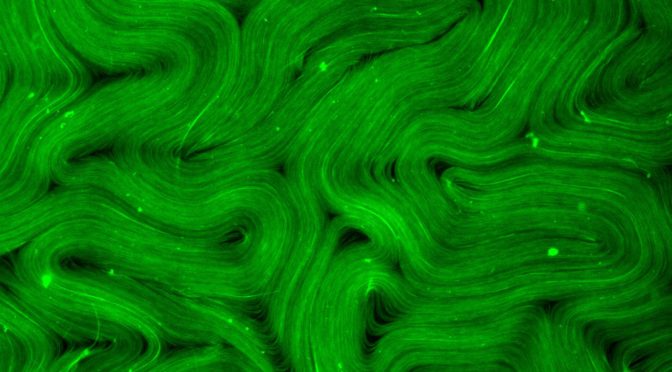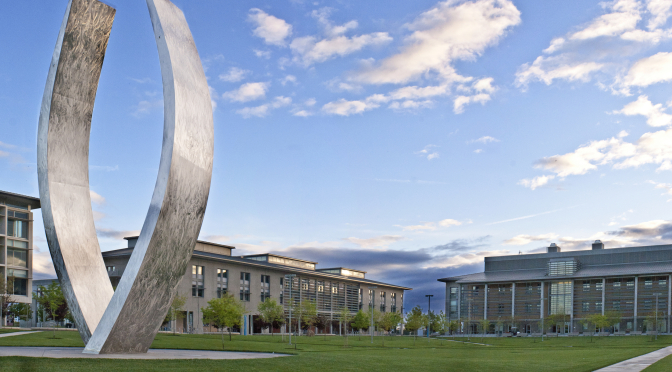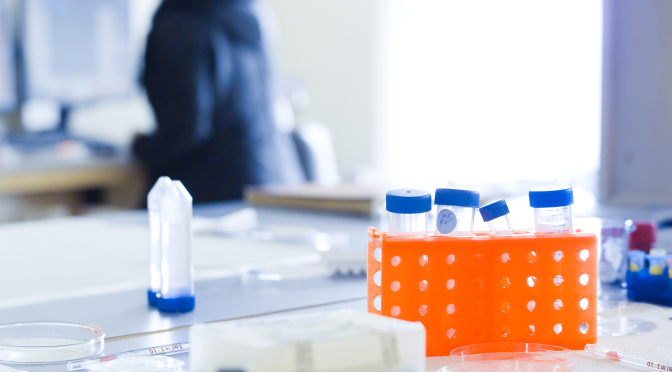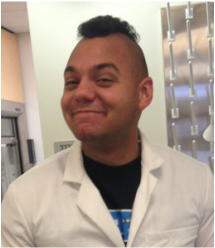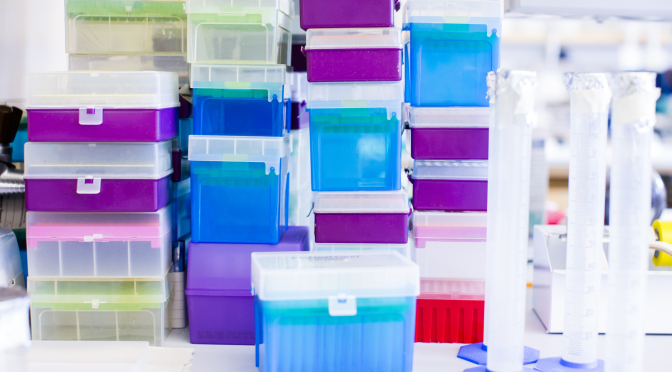This work examines self-mixing in active nematics, a class of fluids in which mobile topological defects drive chaotic flows in a system comprised of biological filaments and molecular motors. We present experiments that demonstrate how geometrical confinement can influence the braiding dynamics of the defects. Notably, we show that confinement in cardioid-shaped wells leads to realization of the golden braid, a maximally efficient mixing state of exactly three defects with no defect creation or annihilation. We characterize the golden braid state using different measures of topological entropy and the Lyapunov exponent. In particular, topological entropy measured from the stretching rate of material lines agrees well with an analytical computation from braid theory. Increasing the size of the confining cardioid produces a transition from the golden braid, to the fully chaotic active turbulent state.
Category Archives: active matter
Submersed micropatterned structures control active nematic flow
Submersed micropatterned structures control active nematic flow, topology, and concentration
Kristian Thijssen*, Dimitrius A. Khaladj*, S. Ali Aghvami, Mohamed Amine Gharbi, Seth Fraden, Julia M. Yeomans, Linda S. Hirst, and Tyler N. Shendruk
PNAS September 21, 2021 118 (38) e2106038118; https://doi.org/10.1073/pnas.2106038118
Coupling between flows and material properties imbues rheological matter with its wide-ranging applicability, hence the excitement for harnessing the rheology of active fluids for which internal structure and continuous energy injection lead to spontaneous flows and complex, out-of-equilibrium dynamics. We propose and demonstrate a convenient, highly tunable method for controlling flow, topology, and composition within active films. Our approach establishes rheological coupling via the indirect presence of fully submersed micropatterned structures within a thin, underlying oil layer. Simulations reveal that micropatterned structures produce effective virtual boundaries within the superjacent active nematic film due to differences in viscous dissipation as a function of depth. This accessible method of applying position-dependent, effective dissipation to the active films presents a nonintrusive pathway for engineering active microfluidic systems.
Topological Chaos in active nematics
Topological chaos in active nematics, Amanda J. Tan, Eric Roberts, Spencer Smith, Ulyses Alvarado, Jorge Arteaga, Sam Fortini, Kevin Mitchell, and Linda S. Hirst, Aug 5th, NATURE PHYSICS (2019) Link
Abstract: Active nematics are out-of-equilibrium fluids composed of rod-like subunits, which can generate large-scale, self-driven flows. We examine a microtubule-kinesin-based active nematic confined to two dimensions, exhibiting chaotic flows with moving topological defects. Applying tools from chaos theory, we investigate self-driven advection and mixing on different length scales. Local fluid stretching is quantified by the Lyapunov exponent. Global mixing is quantified by the topological entropy, calculated from both defect braiding and curve extension rates. We find excellent agreement between these independent mea-sures of chaos, demonstrating that the extensile stretching between microtubules directly translates into macroscopic braiding of positive defects. Remarkably, increasing extensile activity (through ATP concentration) does not increase the dimensionless topological entropy. This study represents an application of chaotic advection to the emerging field of active nematics and quantification of the collective motion of an ensemble of defects (through topological entropy) in a liquid crystal.
The full text of the paper can be found here https://rdcu.be/bM3Gi
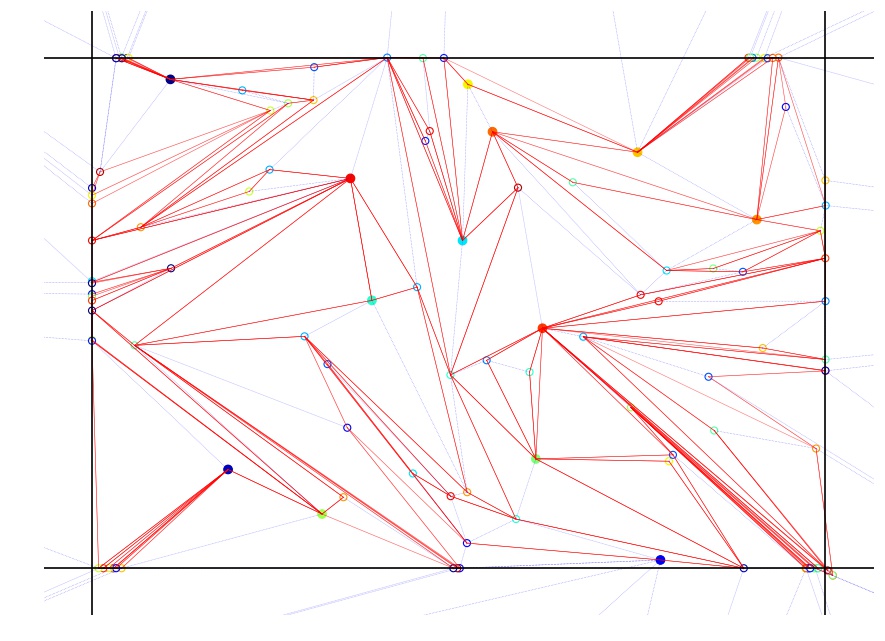
New NSF grant – mixing in active matter
The Hirst Lab has been awarded a new three-year NSF grant along with collaborator UC Merced’s Kevin Mitchell.
The grant, combining experiment and theory is titled “Self-mixing Active Fluids”
Abstract
Active matter is one of the most exciting frontiers in soft matter science. Unlike typical fluids, active fluids are not in equilibrium. Instead, they consume energy locally, translating this energy into internal flows and spontaneous mixing. In this project, mass transport and chaotic mixing in active fluids will be investigated using a fluid consisting of microtubules and kinesin, biological molecules found in the cell. Densely packed microtubules slide antiparallel to each other at a controlled rate due to coupled kinesin molecular motors. An exciting outcome of this work could be the development of a new class of self-mixing active solvents. Such a solvent could revolutionize our understanding of the kinetics of mass transport and chemical reactions. The present proposal concerns much larger length scales than that of standard solvents and will thus serve as an experimental model for these new ideas, helping to establish fundamental laws that govern the behavior of active matter. Since the contents of biological cells are highly complex active materials, far from equilibrium, this work is expected to yield new insights into the role of active materials in biology. A proposed Telluride workshop on transport in active fluids will help to bring together the relatively disparate fields of liquid crystals, biological fluids and nonlinear dynamics. This work will have a significant educational impact at UC Merced, a new university in one of California’s most socio-economically disadvantaged areas. This research will provide the basis for several undergraduate theses and the PIs will use insights from this work to introduce cutting edge materials to their graduate and undergraduate teaching.
This project focuses on transport and mixing in a biologically inspired extensile active nematic. Densely packed microtubules slide antiparallel to each other at a controlled rate due to kinesin molecular motors and the resulting chaotic advection will be measured on different length scales, using the experimental tools of particle tracking, particle image velocimetry, and fluorescence imaging of labeled tracers. Experimental data will be theoretically interpreted using the tools of nonlinear and topological dynamics, thereby merging the fields of chaotic advection and liquid crystals in a unique collaborative effort. Topological entropy will play a central, unifying role in this study. Topological entropy is well known in studies of chaotic advection, but has been thus far overlooked in studies of active nematics. Specific aims are to: 1) use bead tracking and velocity reconstruction, together with tools from nonlinear dynamics, to measure the topological entropy of active nematic mixing; 2) measure the effective diffusivity, enhanced by chaotic advection, of the active nematic on the macroscale; and 3) investigate correlations between molecular-scale dynamics, mesoscale mixing, and macroscale diffusion by varying system parameters.
Active Matter in Biology:Nature News and Views
Recently Prof Hirst authored a News and Views in Nature focussed on two exciting articles about the cell epithelium as active matter.
“Evidence has been found that a biological tissue might behave like a liquid crystal. Even more remarkably, topological defects in this liquid-crystal system seem to influence cell behaviour. A materials physicist and a biologist discuss what the findings mean for researchers in their fields”.
Read the full article here
Biological physics: Liquid crystals in living tissue
Congratulations Dr Joe Lopes
Studying microtubule spools
“Understanding the role of transport velocity in biomotor-powered microtubule spool assembly“
Amanda J. Tan, Dail E. Chapman, Linda S. Hirst and Jing Xu
Amanda Tan – winner 2016 faculty mentor fellowship
Congratulations to physics graduate student Amanda Tan for winning a UC Merced “faculty mentor” fellowship. This prestigious fellowship is awarded to prepare future faculty and provides a year’s funding plus a travel stipend.
Amanda’s research project focuses on active biological materials, in particular microtubules and molecular motors. She is collaborating with the Xu lab at UC Merced and will have her first paper with the group out soon.

The award assists recipients in acquiring and developing advanced research skills under faculty mentorship and is aimed at increasing the number of students who complete their Ph.D. degree and successfully acquire a faculty appointment.



